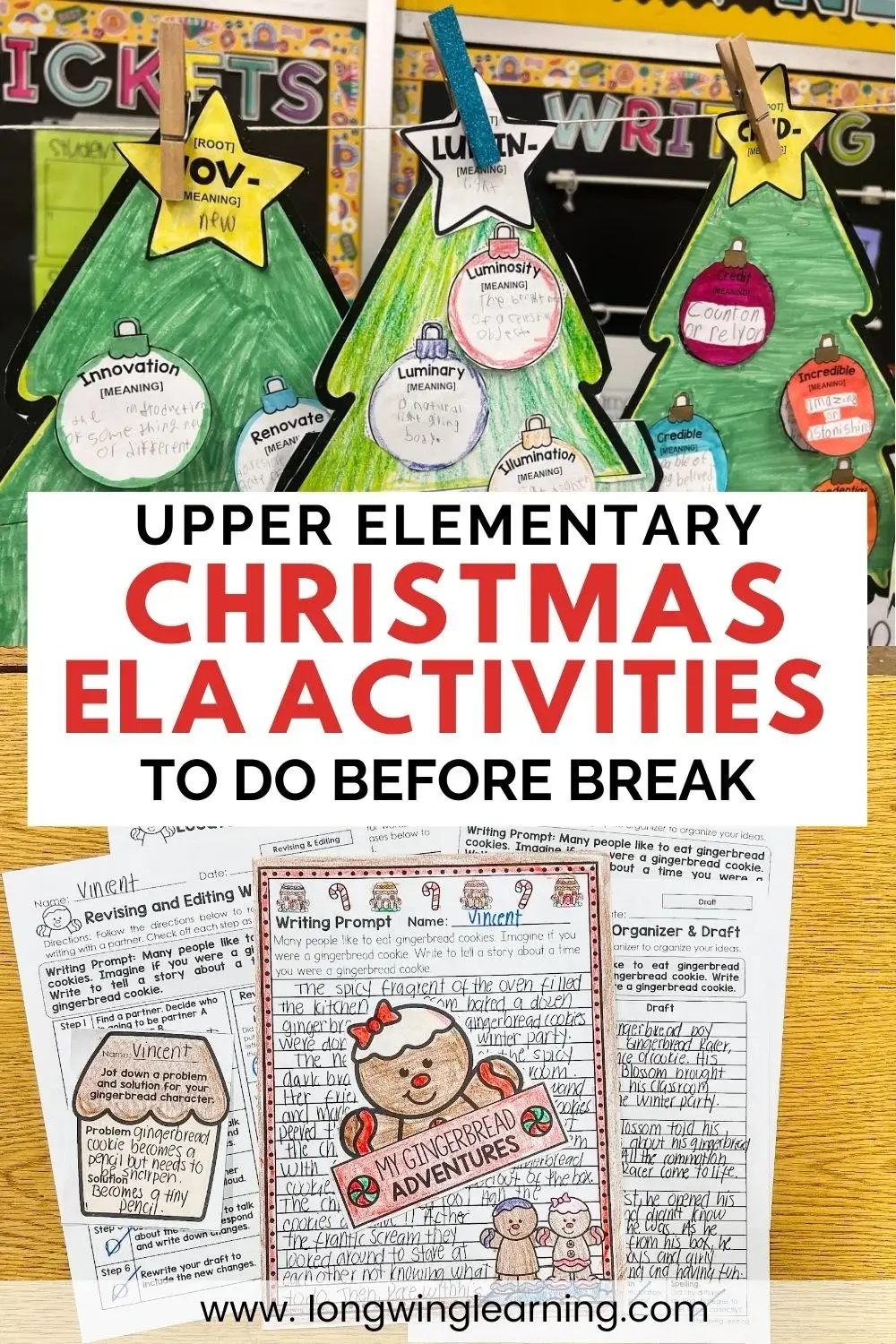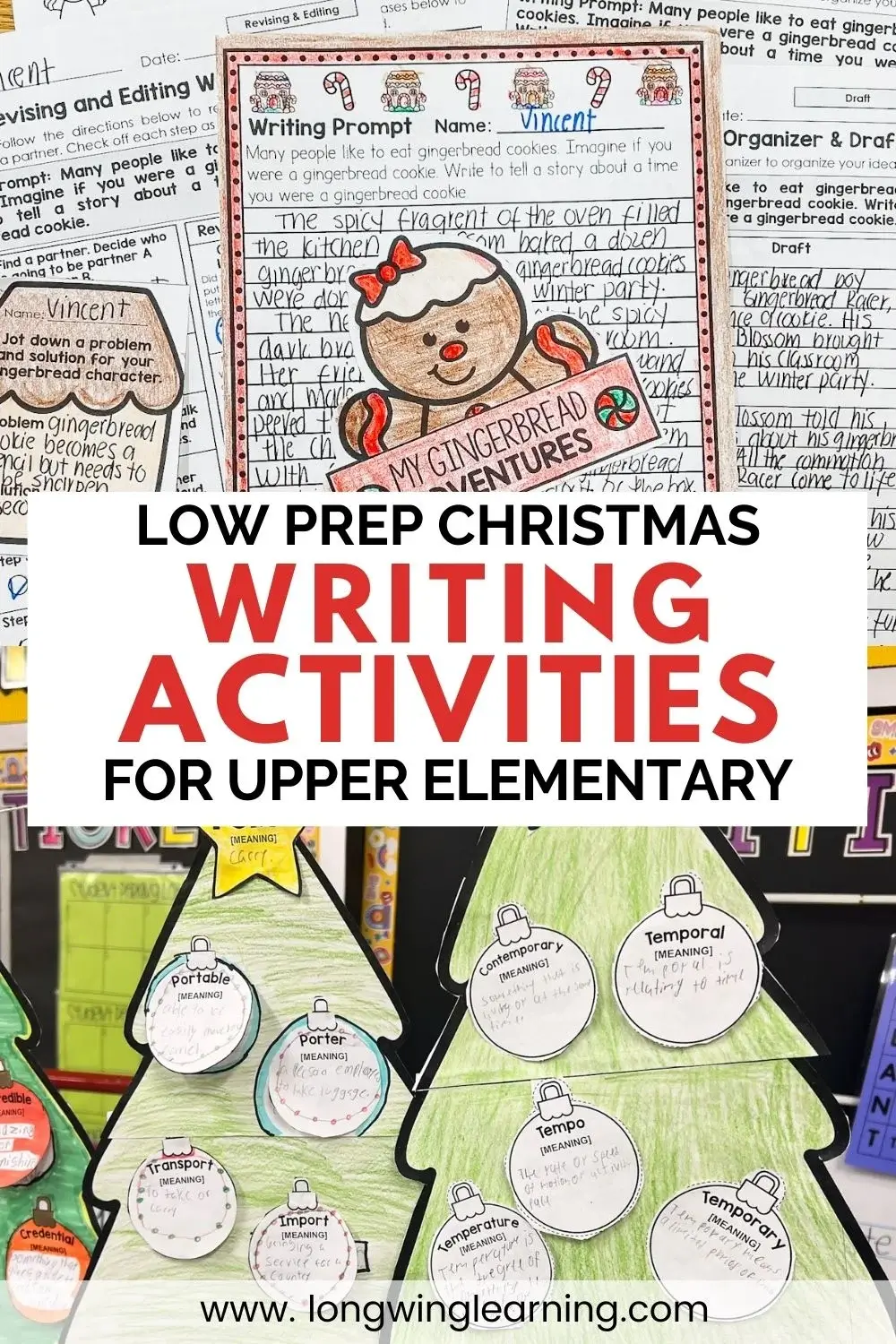Discover why explicitly teaching context clues matters and how to fit it into your reading block. Help upper‑elementary students move from guessing to understanding with explicit, visual instruction.
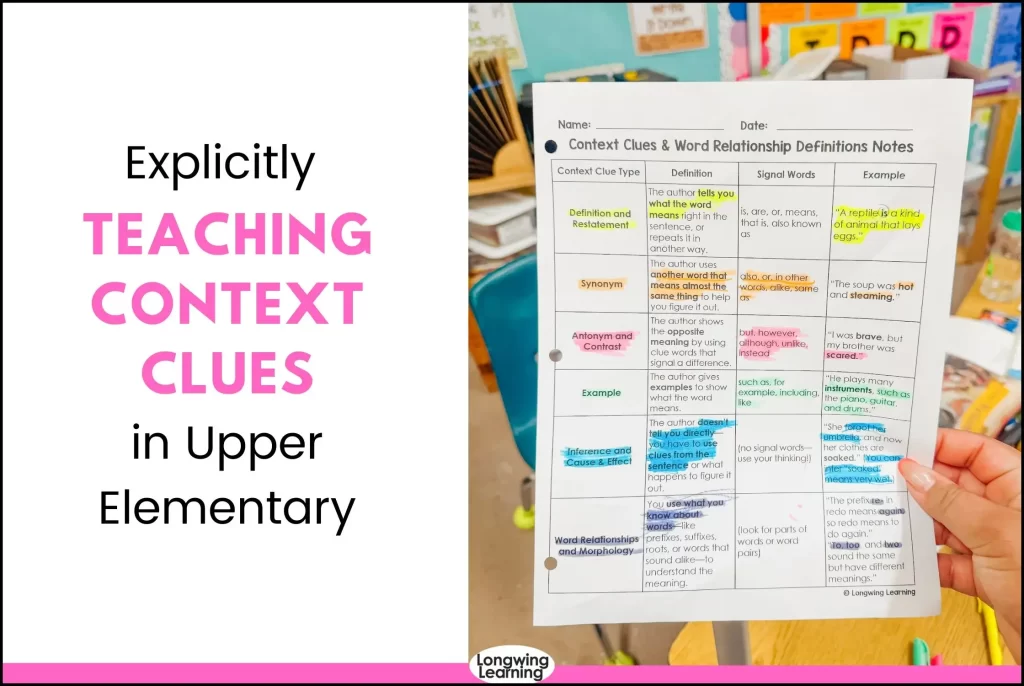
Most students are told to “use context clues,” but few are ever taught how.
This post breaks down why explicitly teaching context clues makes all the difference.
You’ve probably said it before:
“Use context clues to figure out the word.”
It’s one of those phrases we toss into reading instruction because it sounds like we’re helping… but if we’re being honest, most kids hear that and go,
“Huh?”
Context clues are everywhere in text, but unless students know how to spot them and what kinds of clues they’re even looking for, they’re just guessing.
And in upper elementary, guessing doesn’t cut it.
That’s why I made a shift in my vocabulary instruction. I started explicitly teaching context clues. Like, by name. With visuals, color coding, modeling, and practice.
And the shift?
Was everything.
Let me tell you why this approach not only works but transforms how your students read and comprehend.
Table of Contents
Why Just Identifying Context Clues Isn’t Enough
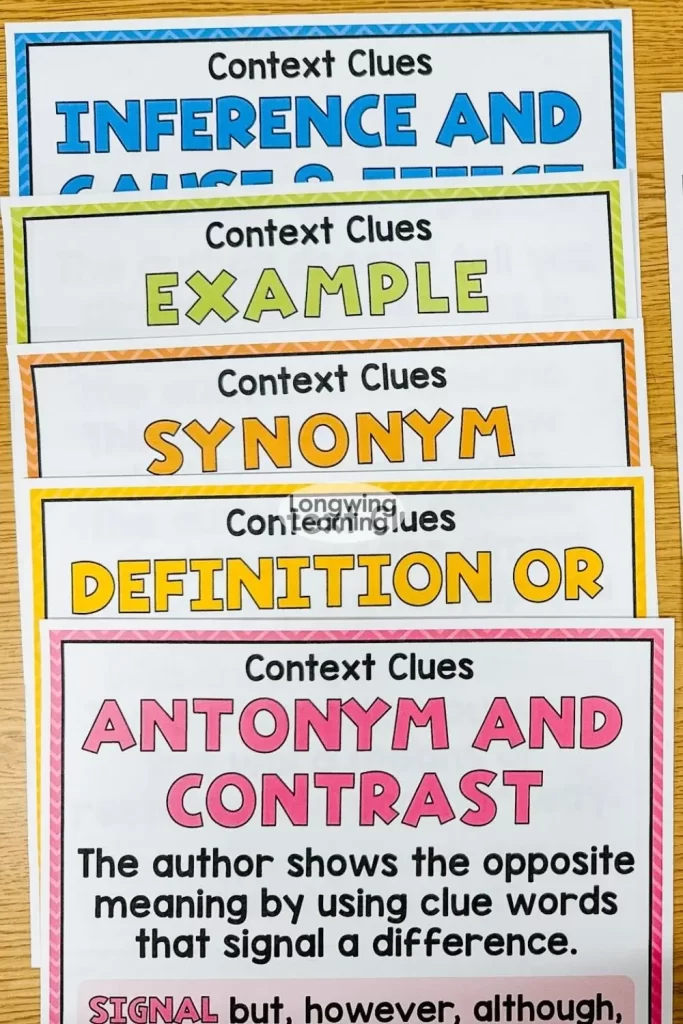
Most students are told to “use context,” but don’t actually know what that means. They might try to read around the word. They might guess. Some might plug the word into a sentence and hope it makes sense.
But here’s the real issue:
They don’t know the different types of context clues—or how to identify them.
For example:
- They may recognize a synonym if it’s obvious.
- They rarely catch an antonym unless it’s paired with “but” or “however.”
- They often miss cause-and-effect relationships (word relationships).
- They struggle with morphology, especially if they’ve never been taught what roots and affixes are.
And as the text complexity increases in grades 4 and 5?
These gaps widen fast.
That’s why passive mention isn’t enough. Students need explicit instruction that shows them how to identify, categorize, and eventually analyze the clues around unknown words.
The Power of Explicitly Teaching Context Clues
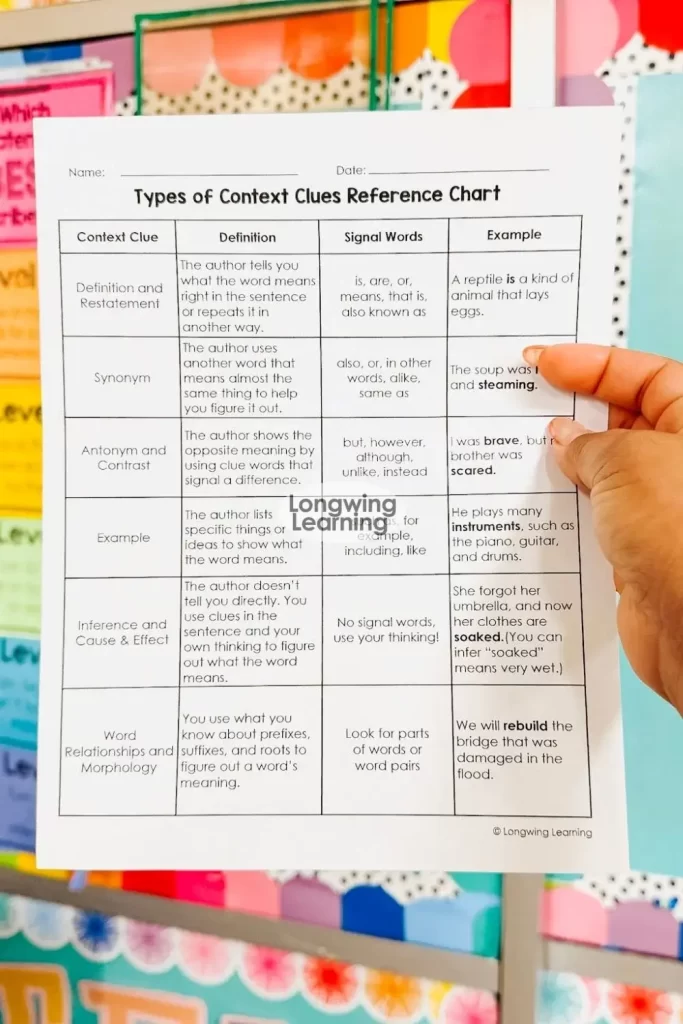
Here’s how it looked in my classroom:
Instead of just saying “use the context,” I introduced students to six types of context clues:
- Synonym
- Antonym/Contrast
- Definition/Restatement
- Example
- Word Relationships (cause/effect, comparison, etc.)
- Morphology (prefixes, suffixes, roots)
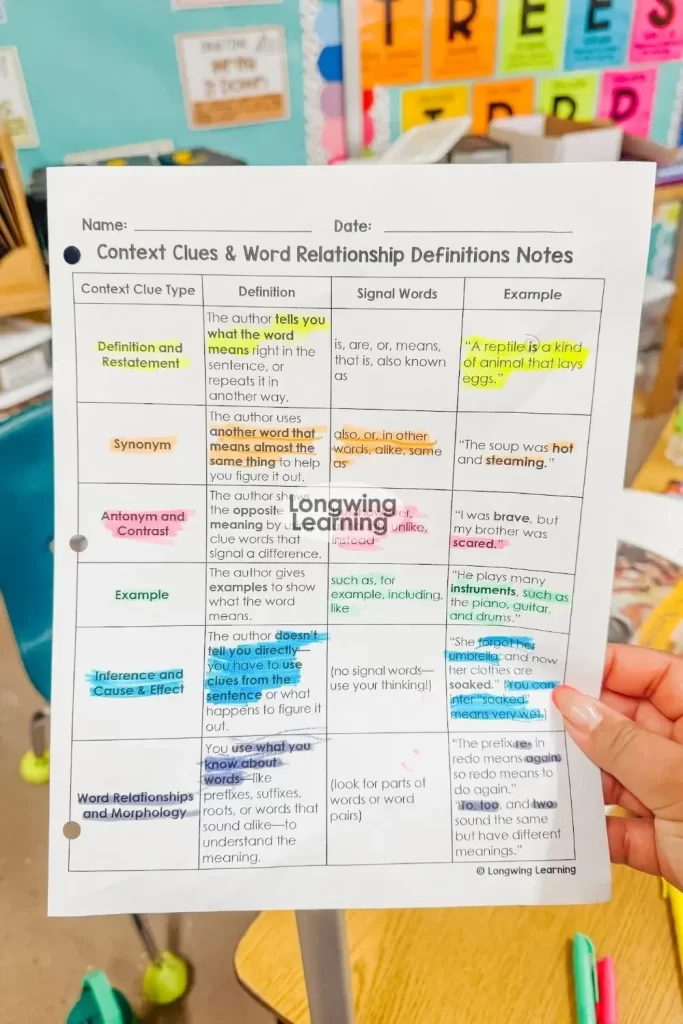
I assigned each one a highlighter color, and we created a visual anchor chart/poster set for reference.
During whole group, I’d model how to spot an unfamiliar word and then say:
“Let’s find the context clue type that helps us understand it.”
We’d highlight the word and the clue in matching colors, using a student notes sheet to log our observations. Over time, students began to internalize the process. They’d raise their hands and say,
“I found an antonym clue!”
“This is a definition—it says or, so it explains the word.”
Their comprehension deepened. Their confidence grew. And they stopped guessing.
They started thinking like readers.
What Explicit Instruction Looks Like in the Classroom

Let’s break down what I mean by “explicit instruction.” This is more than just telling students what a context clue is.
It includes:
- Naming each clue type
- Defining and giving examples
- Color coding each one for visual connection
- Using notes pages for reference and application
- Referring to these clues daily in reading lessons
- Modeling in multiple texts; not just vocabulary practice
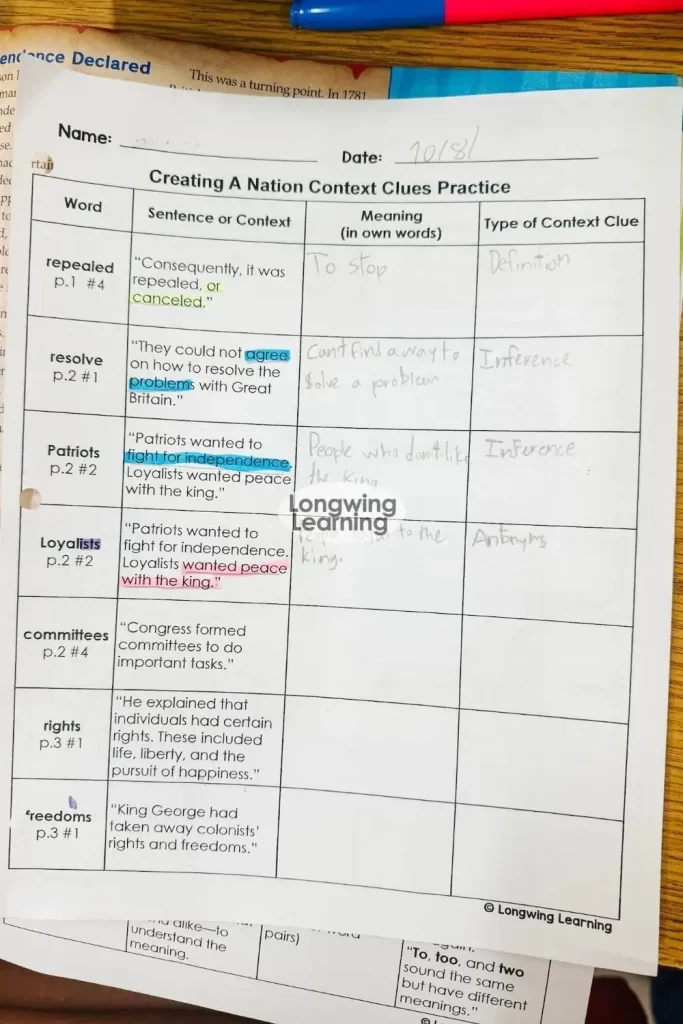
I refer to context clues not just during vocabulary lessons, but during:
- Second reads of a text (especially nonfiction)
- Close reading and annotation
- Small group discussions
- Science and social studies reading
- Writing conferences, when students are stuck on revising for word choice
It’s not a one-and-done. It’s woven through the week.
From Identification to Analysis
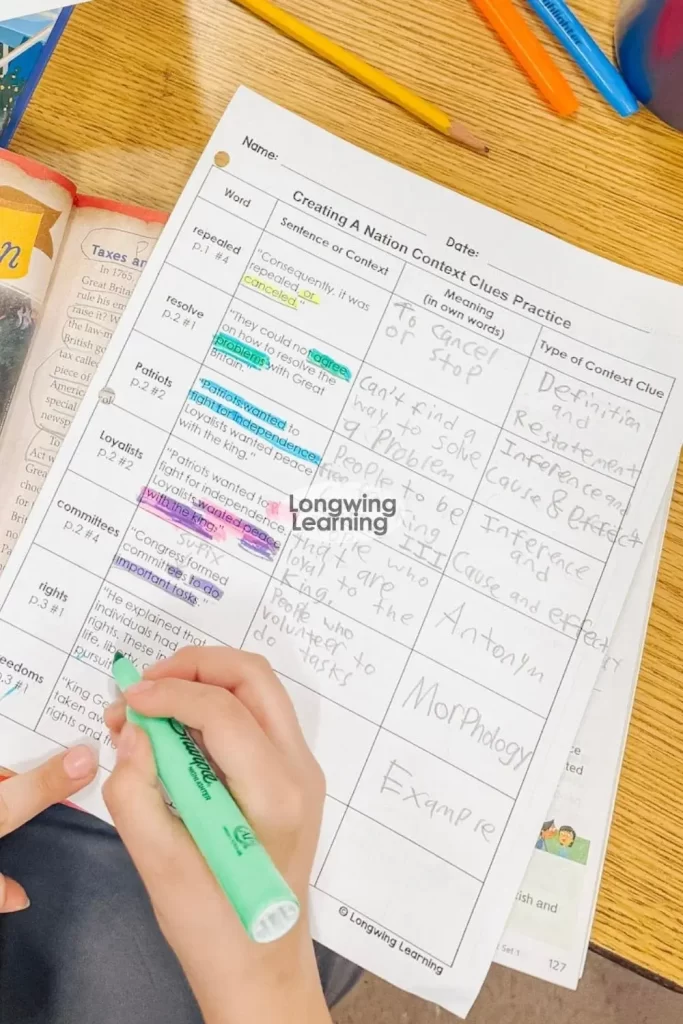
In upper elementary, students are asked to do more than just define a word. They have to:
- Explain how the context helps
- Justify their answers with text evidence
- Understand how word choice affects tone or meaning
- Analyze author’s craft, including figurative language
That means we can’t stop at identifying a clue. We need to model how to say:
“The author uses a synonym here, which helps the reader understand the word is positive…”
“The example clue shows that this word relates to weather patterns…”
“The prefix ‘sub’ gives us a hint that this means under something…”
When we do this regularly, students don’t just get better at vocabulary; they get better at reading everything.
Where It Fits in the Reading Block
This doesn’t have to be a big overhaul. Here are ways to sneak in this strategy:
| Routine | How to Use Explicit Context Clue Instruction |
| Morning Work | Add 1 sentence with a context clue and highlight it as a warm-up |
| Whole Group Reading | Model clue-finding during read-aloud or shared text |
| Small Groups | Use note pages and clue-coloring with decodables or leveled readers |
| Centers | Have students find and label clue types in independent reading |
| Interactive Notebooks | Shrink the notes sheet to 80% and glue it in! |
| Content Areas | Apply clue-type strategies in science/social studies texts |
| Writing | Ask: “Could someone figure this word out from the sentence?” If yes, what type of clue are you using? |
Why This Helps Every Reader
This isn’t a remediation strategy. It’s a comprehension routine for every reader.
Even high flyers benefit from learning how to analyze context clues more deeply.
They can apply this strategy to:
- Understanding historical texts
- Decoding scientific vocabulary
- Writing more complex, clue-rich sentences themselves
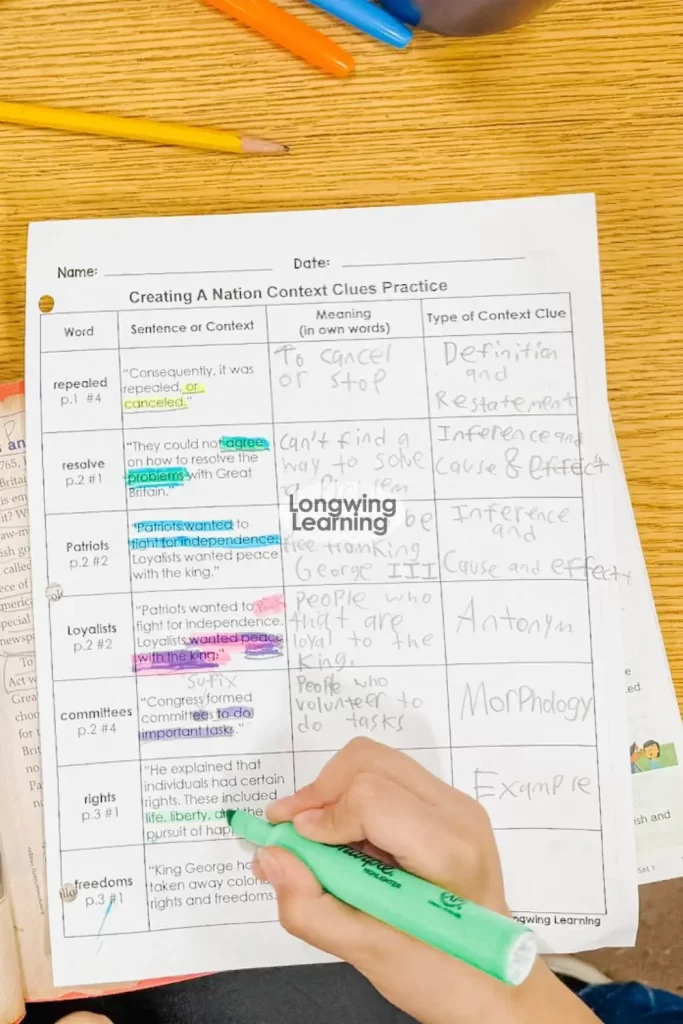
Explicit instruction helps all students become more aware of how language works, whether they’re learning to read or reading to learn.
We all know comprehension matters. But we don’t always give vocabulary the seat at the table it deserves.
Vocabulary is one of the key strands of skilled reading, and context clues instruction is how we equip students to navigate unfamiliar words independently.
The ability to say:
“I don’t know that word, but I can figure it out…”
That’s the goal. That’s the magic. And that’s what explicit context clue instruction makes possible.
Grab the Free Context Clues Notes Page
Want to start explicitly teaching context clues without reinventing the wheel?
Download the student notes page I use in my classroom!
It includes:
- Definitions and color-coded clue types
- Space to record examples
Sentence stems to help students explain how they know.
Explore the Context Clues Posters
Ready to teach this all year long—with clarity and confidence?
Check out my Context Clues Poster Pack
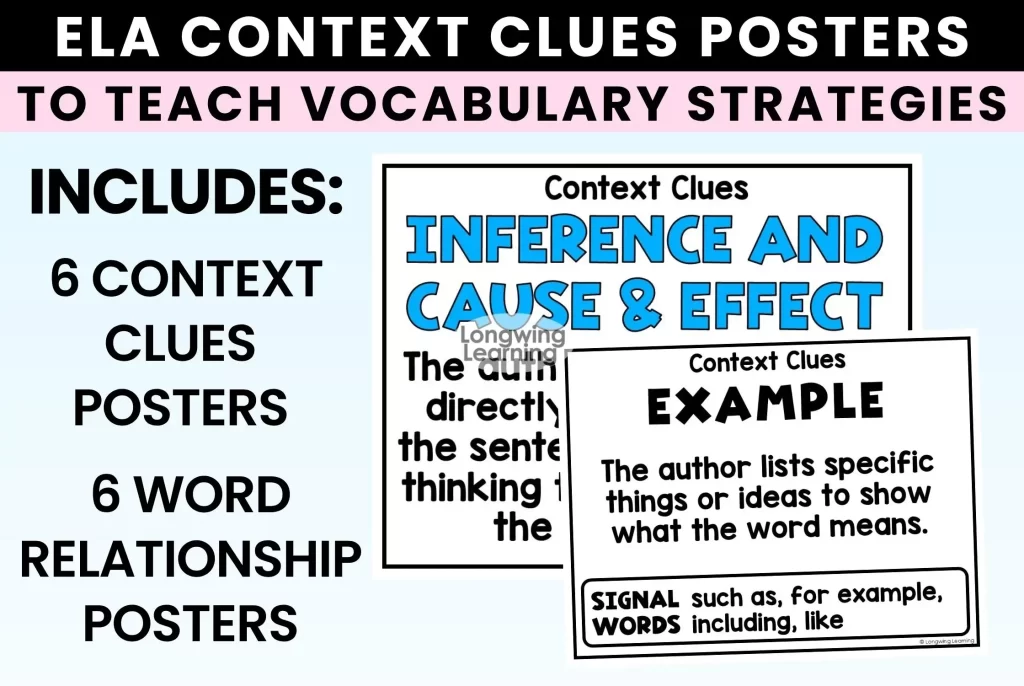
Includes:
- Visual clue-type posters (color-coded)
- Editable versions
- Student reference pages
- Display ideas and anchor chart printables
Also explore:
These all layer beautifully into your vocabulary and comprehension instruction.
Teaching Vocabulary Strategically
When we teach vocabulary strategically, we’re not just checking off a standard; we’re building readers who think.
Explicitly teaching context clues isn’t just about clarity. It’s about giving students the power to understand, analyze, and communicate across all subjects.
Pin this post, share it with your team, and let me know on Instagram @longwinglearning what your students discover when they start spotting context clues for themselves.
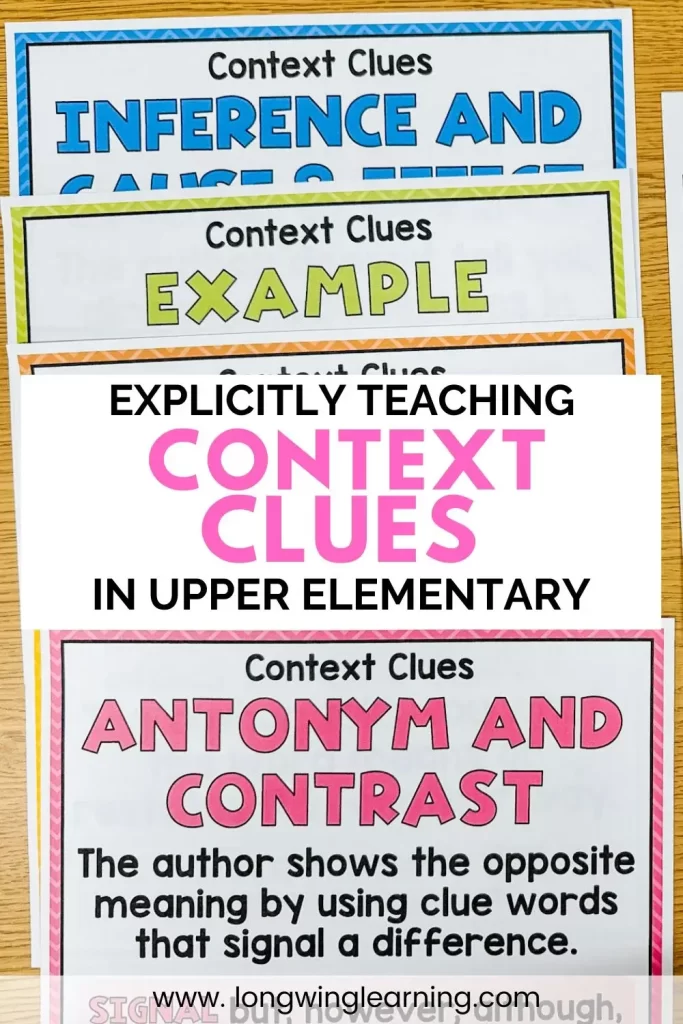
Explore the Full Teaching Context Clues Series
Want to keep going?
This post is the second in my Context Clues Series; check out:
- What are the 6 Types of Context Clues?
- Why Explicitly Teaching Context Clues Changes Everything
- How I Use Color Coding Context Clues to Teach Vocabulary
- Teaching Inferencing Context Clues
- How Teaching Prefixes and Suffixes in Groups Boosts Comprehension
- How to Help Students Analyze Context Clues (Not Just Spot Them)
…and let me know on Instagram @longwinglearning if you use it with your class!








